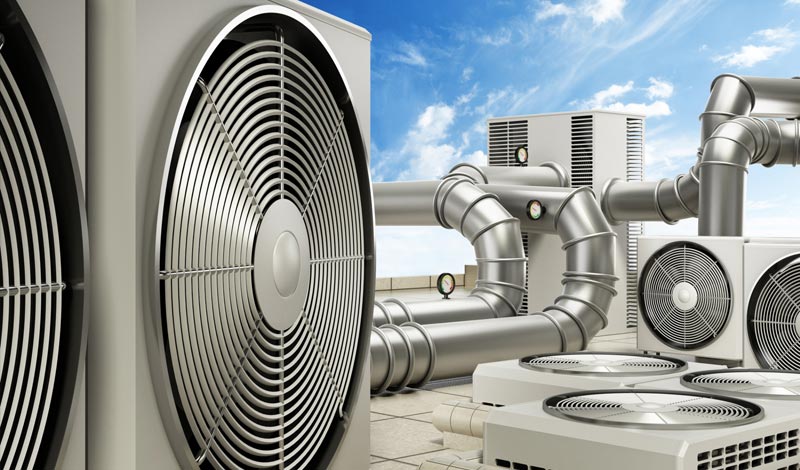Air conditioning is the single largest user of electricity in many facilities. Upgrading to a new, energy-efficient system will not only lower your summer energy bills, but also bring additional benefits, such as reduced maintenance costs and improved indoor comfort.
Cooling technologies
To help you choose the right system for your needs, here’s a brief overview of some commonly used air conditioning technologies.
Chillers are complex systems most often found in larger commercial and institutional facilities. Chilled water is produced and circulated through the conditioned space to remove heat. The heat is then discharged outdoors through a cooling tower. There are two basic types of chillers: air-cooled and water-cooled. A number of compressor technologies are used, including reciprocating, scroll, centrifugal, screw and absorption. Work with your supplier to select the right system type and size for your application.
Packaged rooftop units are available in the 3- to 200-ton range. The installation and maintenance of these systems is relatively easy because the condenser, compressor and other components are packaged together in a single unit. Unlike with chillers, there’s no need for cooling towers, water supply or return piping. Though not as efficient as chillers, packaged systems are commonly found in office buildings, schools, retail facilities and small industrial plants.
Thermal energy storage systems produce and store chilled water or ice at night to provide cooling in daytime when electricity is more expensive due to high demand. During the day, chilled water or a refrigerant circulates through the storage tank coils to provide cooling to the building. Thermal energy storage systems are best suited for larger applications with high cooling loads, such as hospitals, universities and manufacturing facilities. These facilities can negotiate favorable off-peak rates for nighttime operation.
Heat pumps provide cooling by pulling heat from inside and transferring it to the earth or outside air. Because they move thermal energy, rather than create it, heat pumps are highly efficient. The relative stability of the ground’s temperature makes ground-source (geothermal) heat pumps typically more efficient than air-source models. In the summer, ground-source units have the added advantage of providing free hot water using rejected waste heat from air conditioning.
Variable refrigerant flow (VRF) systems, like conventional air conditioners, use condensers to cool a refrigerant and evaporators to absorb heat. With VRF systems, however, a single outdoor condenser can be tied to as many as 20 indoor evaporators. VRF systems are more energy-efficient than conventional air conditioning and allow for multiple temperature zones and individualized control. They’re typically more expensive to install and require a separate ventilation system. Energy cost savings can provide a return on investment over the life of the system.
Get the right fit
Make sure your new system matches your cooling requirements. Oversizing is one of the most common mistakes when installing new air conditioning equipment. Oversized systems are more expensive to install, less efficient and more costly to operate.
To size the system correctly, consider the following factors:
- Your local climate conditions
- Building size and orientation
- Facility type, as well as primary processes and activities
- Number of occupants and their comfort preferences
- Building heat load
Proper sizing requires good communication with your mechanical systems engineer and system installer. Asking questions will help to ensure your new system matches your needs.
